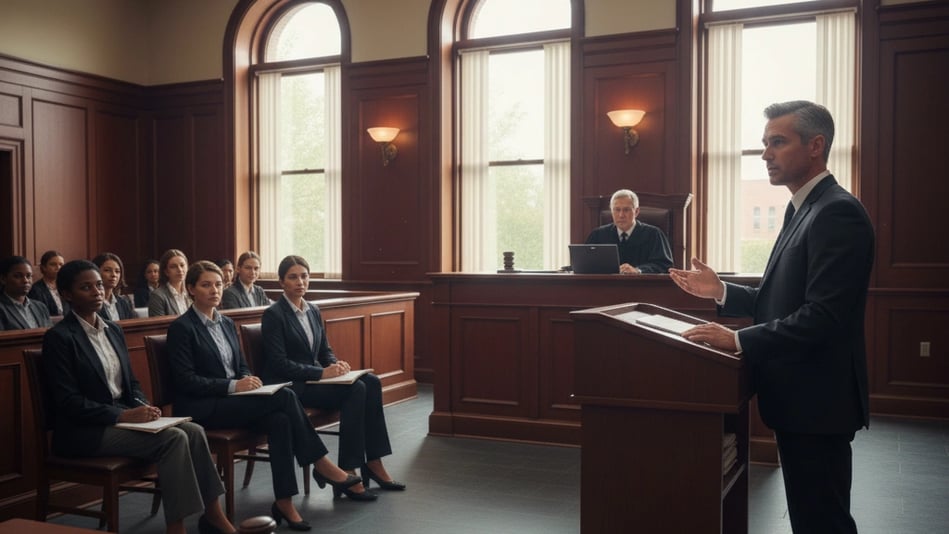On March 22, 2019, around 6:55 a.m., Cecile Druzba was driving southbound on Vermont Route 22A in Addison, Vermont, nearing the driveway of 4582 Vermont Route 22A. At the same time, Ian LaBounty was driving a 2013 Subaru Impreza northbound on Vermont Route 22A, also approaching the driveway of 4582 Vermont Route 22A.
LaBounty either fell asleep or lost control of the Impreza, causing it to cross into the southbound lanes and collide with Druzba’s Accord.
During the crash, the front corner of the Impreza hit the front corner of the Accord. The impact forces on the Accord were consistent with those seen in Federal Motor Vehicle Safety Standards testing and were less severe than those in NHTSA’s New Car Assessment Program and the Insurance Institute for Highway Safety tests.
The design of the Accord lacked sufficient structural reinforcement on the driver's side frame and door. This inadequacy allowed the Impreza to penetrate the driver’s side of the Accord, severely impacting and crushing the driver's area of the occupant compartment.
5 min read
5 min read
American Honda Motor Co. Prevails in Product Liability Lawsuit Over Fatal Accord Crash
N
Nishica Srivastava
August 30, 2024

Table of Contents
Druzba V. Honda Motor Company, Ltd. Et Al
Case Background
On January 26, 2022, Matthew Druzba, the Plaintiff, as the Executor of decedent Cecile Druzba's estate, initiated this wrongful death lawsuit on behalf of the estate, himself, and all statutory beneficiaries. The case was filed in the United States District Court, Vermont (Burlington). The cause of the lawsuit against Honda Motor Company was motor vehicle product liability. The case was assigned to Chief District Judge Christina Reiss. [Case number: 2:22cv19]Cause
Damages
As a direct result of the defective and dangerously unsafe condition of the Accord, significant damages were incurred. The Plaintiff sought compensation for several types of damages under this product liability lawsuit which included: a. Medical and funeral expenses related to the care and death of Cecile Druzba; b. Compensation for the lost income and earning potential of Cecile Druzba, which would have supported the Plaintiff and the next of kin; c. Other economic support and services provided by Cecile Druzba that would have benefited the Plaintiff and the next of kin; d. The loss of love, companionship, care, nurture, and protection, as well as the loss of the parent-child relationship that the Plaintiff and the next of kin would have anticipated; e. The grief and mental anguish experienced by the Plaintiff and the next of kin; f. The conscious pain and suffering endured by Cecile Druzba. The Defendants acted recklessly or with blatant disregard for Cecile Druzba's, as well as the Plaintiff's and the next of kin's, rights during the design, testing, manufacture, marketing, and sale of the unsafe Accord. This conduct warranted punitive damages designed to punish the Defendants and deter similar actions by others.Key Arguments and Proceedings
Legal Representation
- Plaintiff(s): Matthew Druzba As Executor of the Estate of Cecile Druzba, Deceased | estate of | Cecile Druzba |
- Counsel for Plaintiff(s): David A. Brose | Robert B. Luce | Samuel R. Barnett
- Defendant(s): American Honda Motor Co., Inc.
- Counsel for Defendant(s): Jacob J. Lantry | James M. Campbell | Trevor J. Keenan
Claims
The Plaintiff's complaint included counts of strict liability and negligence against the Defendant. When the Accord left the control of the Defendants, it was defective and unreasonably dangerous for its intended use. The defects in the Accord included a lack of adequate occupant protection. Specifically: a. The vehicle was not crashworthy in foreseeable accidents, including oblique and overlap frontal collisions. b. The front and driver’s side structures were inadequate and unsafe in such crashes. c. These structures, along with their components, failed to protect Cecile Druzba properly during a foreseeable crash. d. The design of the front and driver’s side structures did not ensure proper performance in a foreseeable crash. e. The strength of these structures was insufficient to deflect an impacting vehicle, leading to a loss of integrity in the occupant compartment. f. The structures did not absorb the forces of an impact effectively, which compromised the occupant compartment. g. Necessary reinforcements were missing, which would have prevented a loss of physical integrity in a foreseeable crash. h. The design and manufacture lacked essential features and reinforcements, such as extended bumper beams and adequate side-impact door beams, to ensure the safety of the occupant compartment. i. The vehicle, including its structures, did not undergo sufficient testing or inspection before distribution to ensure it was suitable for its intended purpose. j. The vehicle did not receive adequate Failure Mode Effects Analysis or Finite Element Analysis. k. There were no sufficient warnings or notices regarding the hazardous condition of the front and driver’s side structures.Defense
The defense denied claims of strict liability and negligence. They claimed that the Plaintiff was barred from recovering damages, either fully or partially, due to the decedent's own negligence and other faults. Moreover, the Plaintiff could not recover because the design of the subject vehicle met the state-of-the-art standards at the time it was manufactured and distributed.Jury Verdict
On July 16, 2024, the Vermont jury returned a defense verdict. The jury found that the claims of strict liability and negligence against Defendant American Honda Motor Co., Inc. had not been sufficiently proven by Plaintiff. Accordingly, no damages were awarded to Plaintiff. On July 19, 2024, a judgment consistent with the verdict was entered in this product liability lawsuit.Court Documents:
Available upon requestCategories
Tags
Negligence
Wrongful Death
Defense Verdict
Product Liability
Strict Liability
About the Author
NS
Nishica Srivastava
Writer